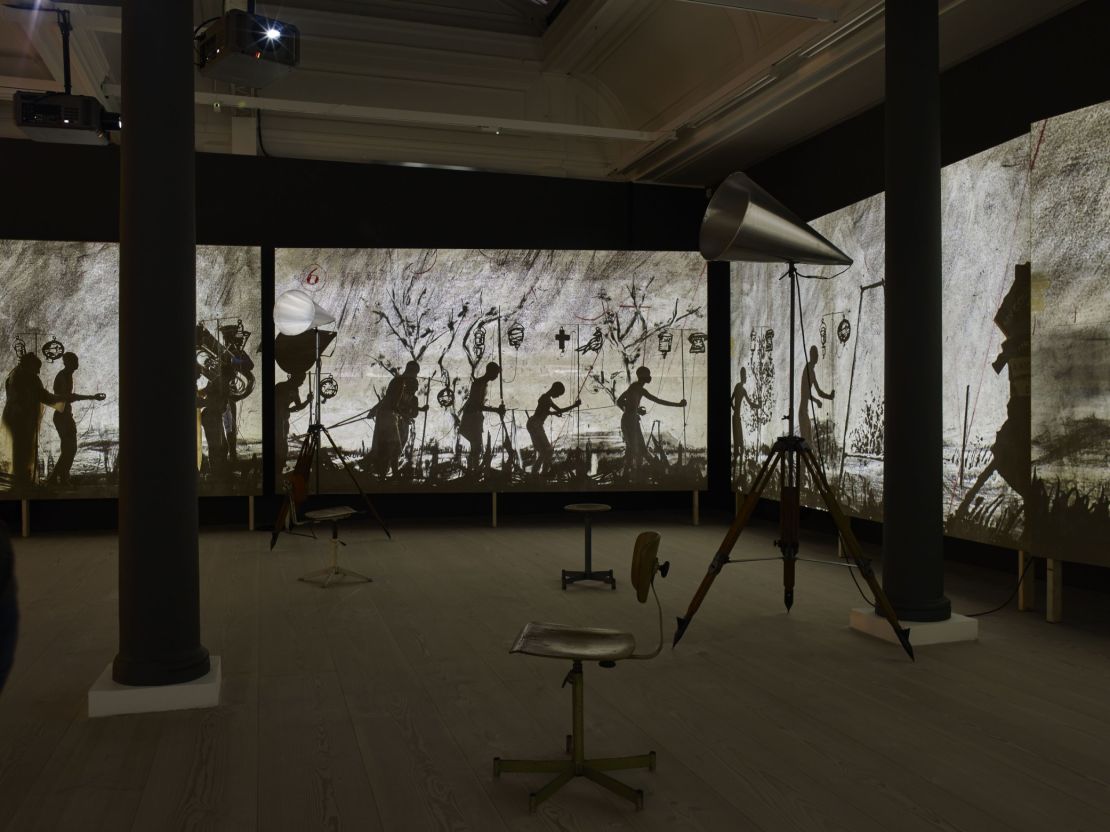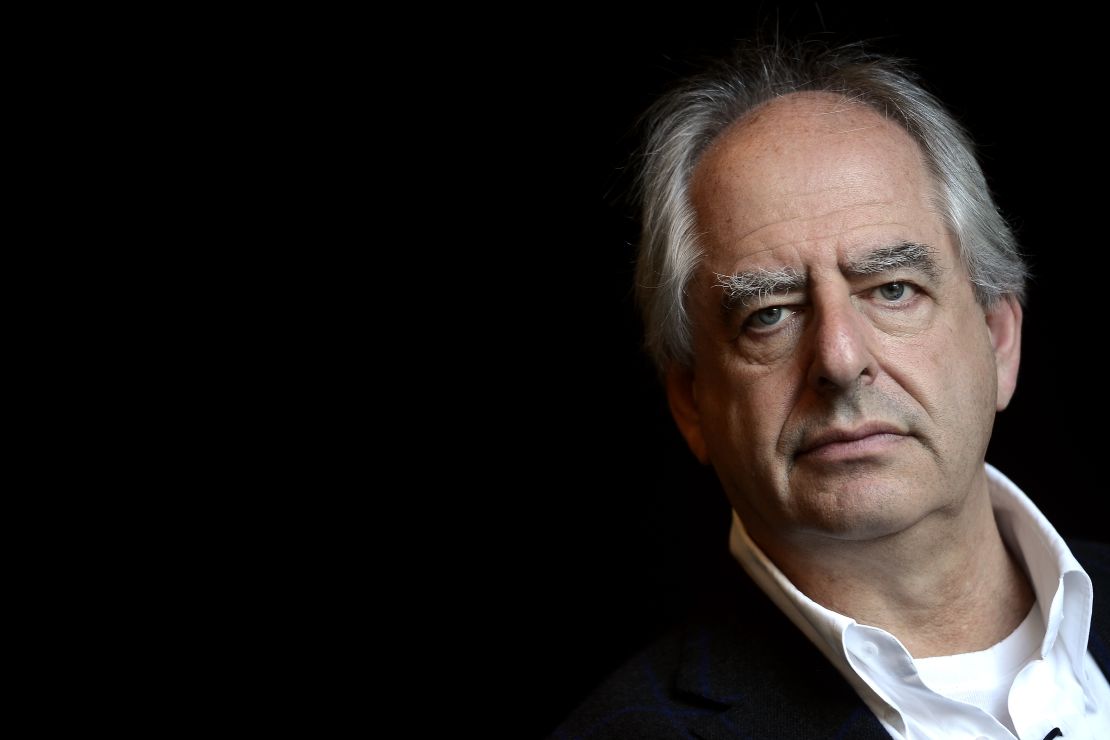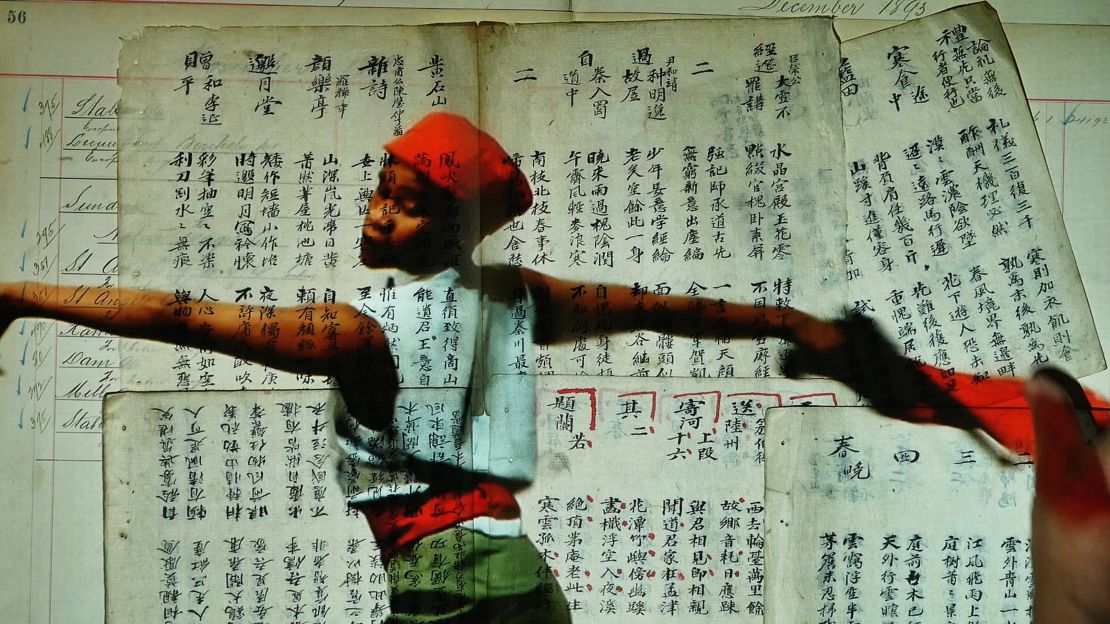Story highlights
Artist William Kentridge's new film shows refugees marching in a "dance of death"
The film was made months before the European Refugee crisis hit headlines
Kentridge says if he tries to confront crises head on, he can't: "I get nothing"
So how does he do it?
William Kentridge’s video installation at Marian Goodman Gallery London follows refugees as they march through borders and across uncertain terrain in what the artist calls a “dance of death.”
The animated film, titled More Sweetly Play the Dance, fills a whole floor, where it forms the dramatic centerpiece to an exhibition of the South African artist’s new works.

Across a 45 meter-long, eight-screen projection, we see a unbroken parade of silhouettes, dancing to the sound of a brass band, while carrying their remaining possessions across their shoulders. Wrapping around the viewer, the figures pass one after another – unavoidably bringing to mind the hundreds of thousands of refugees the world has watched perilously trek towards asylum in Europe.
But this exhibition was not created as a reaction to the the refugee crisis that has dominated TV news programs for the last month: the film is years in the making, and was seen at the EYE Film Museum in Amsterdam this April.
So how does an artist so perfectly foresee this kind of tragedy?
If you’re 60-year-old Kentridge, you don’t try.
Since Kentridge rose to international fame 20 years ago, he has followed in the footsteps of his parents (lawyers who fought against South Africa’s apartheid regime) in tackling the “absurdity” of tyrannical governments. In his own work, he highlights victims of war and natural disaster – starting always, he says, with a blank page.

It’s not a matter of using his imagination, Kentridge explains. It’s about working with the materials – here charcoal, black ink and newsprint, brought to life in animation. He begins by testing the capabilities of these materials, and arrives at the image that they’ll show.
Walking around the exhibition, Kentridge discusses his earlier work, saying: “If I had to say to myself, ‘This is a monstrous act that has happened here in South Africa – what is the strongest way I can defeat it?’ I get nothing.”
Years in the making
This is Kentridge’s first large-scale solo show in London for 15 years. The artist covers the entrance space with 10-foot tall blown-up newspapers and dictionary entries, splashed with jet black ink.
There’s another major video installation, Notes Toward a Model Opera, born out of Kentridge’s research into the social history of modern China for this year’s exhibition at Beijing’s Ullens Center for Contemporary Art. He says it’s inspired by the country’s Mao-era “vainglorious” propaganda operas, but there’s a lot of South Africa in it as well – from the “colonial dance hall” music to contemporary South African dancer Dada Masilo’s choreography.

Banners featuring political slogans flash up during the film, including “dance in the face of certainty.” It’s a refrain that is seen across the whole show: Kentridge’s distrust of absolute certainty, especially when espoused by ideologically certain governments.
Leading a tour of the exhibition for its launch, Kentridge stands at the end by some sculptures, seemingly glued together from corrugated cardboard, notepaper scraps, and torn maps. When his knuckle raps on the sculptures, the sound is metallic. The works are expensively cast in bronze and painted to appear thrown together from everyday materials.
But reviewers have unsurprisingly focused on the epic, timely More Sweetly Play the Dance. And Kentridge seems only half-surprised by the film’s prescience.
He says the work was originally provoked by an earlier exodus: the images of families in Liberia and Sierra Leone fleeing villages struck by the Ebola virus during last year’s epidemic. Kentridge says he has been interested in the imagery of these processions – dances of death – which have reoccurred routinely since the plagues of the Middle Ages.
Looking again at the film, behind all the fevered activity of the dancing crowd, it’s easy to miss the illustrated crops in the background. These grow and fall while the walkers inch forward – as if months and years pass by, while the defiant procession marches on.
William Kentridge’s More Sweetly Play the Dance is exhibiting at the Marian Goodman Gallery in London and runs until 24 October.















